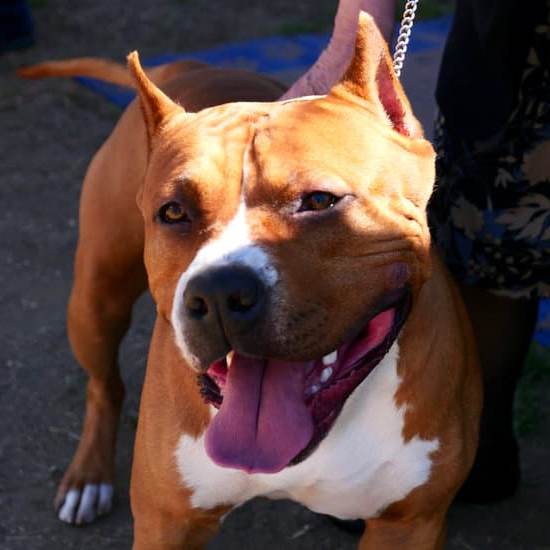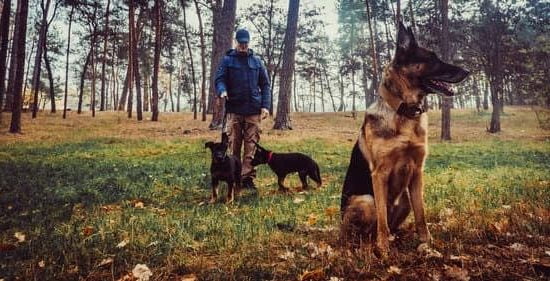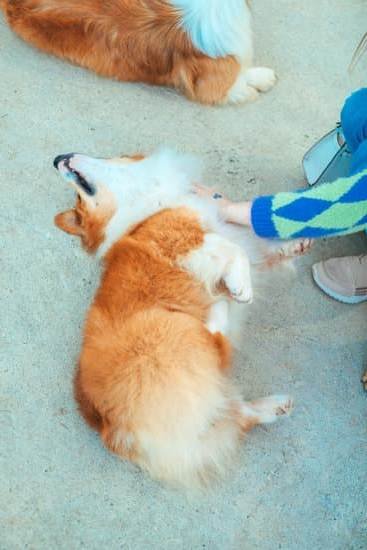What is agility dog training? Agility dog training is a fun and challenging sport where handlers guide their canine companions through obstacle courses with speed and precision. This article will delve into the fundamentals of agility dog training, from its origins to the benefits it offers for dogs’ physical and mental health.
Agility dog training has a rich history that dates back to the late 1970s when it first gained popularity in England. Since then, agility has evolved into a worldwide phenomenon, with competitions held around the globe. The sport not only provides an outlet for dogs to showcase their athleticism but also serves as a bonding experience between dogs and their owners.
One of the key aspects of agility dog training is understanding what makes a good agility dog. Dogs with traits such as intelligence, speed, stamina, and eagerness to please are ideal candidates for agility training. It is essential for handlers to recognize these characteristics in their canine partners to ensure success in agility competitions. Through proper training techniques and equipment, both handler and dog can work together to achieve agility prowess.
History of Agility Dog Training
Agility dog training has a rich history that dates back to the 1970s when it first gained popularity as a sport in the United Kingdom. The concept of agility training for dogs was inspired by equestrian show jumping, with the idea of having dogs navigate through obstacles while being timed.
It quickly caught on as an exciting and challenging activity for both dogs and their owners, leading to the development of organized competitions and events. Over time, agility dog training has evolved and grown into a beloved sport worldwide, with different organizations establishing rules and standards for competitions.
As agility dog training spread beyond its origins in the UK, it gained traction in countries like the United States, Canada, Australia, and more. Today, agility training is not only seen as a fun physical activity for dogs but also as a way to strengthen the bond between dogs and their owners.
Modern agility dog training incorporates various elements such as tunnels, weave poles, A-frames, teeter-totters, and more. These obstacles are designed to test a dog’s speed, agility, coordination, and ability to follow commands from their handler.
One of the key driving forces behind the popularity of agility dog training is its ability to provide both physical and mental stimulation for dogs. Not only does participating in agility exercises help improve a dog’s physical health by promoting strength, endurance, flexibility, and cardiovascular fitness but it also challenges their cognitive abilities by requiring them to problem-solve and make quick decisions on the course.
Additionally, agility training can also boost a dog’s confidence and overall well-being by providing them with an outlet for their energy and allowing them to showcase their skills in a fun and rewarding environment.
Benefits of Agility Dog Training
Agility dog training is not only a fun and exciting activity for dogs, but it also offers numerous physical and mental health benefits. One of the key advantages of agility training is that it provides dogs with a great workout that helps them stay fit and healthy. The combination of running, jumping, climbing, and weaving through obstacles helps to improve their cardiovascular health, muscle strength, and overall agility.
Physical Benefits
In addition to improving fitness levels, agility training can also help dogs maintain a healthy weight. The high-energy nature of agility courses can burn a significant amount of calories, making it an effective way to prevent obesity in dogs. Furthermore, the repetitive movements involved in agility training can help enhance flexibility and coordination in dogs. This increased mobility not only improves performance on the course but also reduces the risk of injuries in daily activities.
Mental Benefits
Apart from the physical benefits, agility dog training also provides mental stimulation for dogs. The problem-solving aspect of navigating through obstacles challenges their cognitive abilities and keeps their minds sharp. Engaging in agility courses can help reduce boredom and prevent behavioral issues such as excessive barking or destructive chewing. Additionally, the positive reinforcement techniques used in agility training can boost a dog’s confidence and strengthen the bond between the dog and their owner.
What Makes a Good Agility Dog
Agility dog training is a specialized form of training that requires a certain set of characteristics and traits in dogs to excel in this sport. While any breed of dog can participate in agility training, there are certain qualities that make some dogs more suited for this activity than others.
One of the most important traits to look for in a potential agility dog is their level of energy and enthusiasm. Dogs who thrive on physical activity and enjoy learning new tasks tend to do well in agility training.
Physical Attributes
In addition to energy and enthusiasm, physical attributes play a crucial role in determining whether a dog is well-suited for agility training. Dogs with good overall health, strength, agility, and coordination are more likely to succeed in agility competitions. A good agility dog should also have an ideal body condition – not too thin or overweight – to ensure they can navigate the obstacles effectively without putting excess strain on their bodies.
Intelligence and Trainability
Another important characteristic to look for in an agility dog is intelligence and trainability. Dogs that are quick learners, eager to please their owners, and able to follow commands reliably are better equipped for the challenges of agility training.
The ability to learn new skills quickly and adapt to different training techniques is essential for success in this sport. Additionally, a good agility dog should have a strong bond with their handler, as clear communication and trust between the two are key components of effective teamwork on the agility course.
Agility Training Equipment
Agility dog training requires specific equipment to help dogs navigate through obstacle courses efficiently and safely. Here are some must-have gear for agility training:
- Agility Tunnels: Tunnels are a fun and challenging obstacle that dogs must run through. They come in various lengths and diameters to cater to different sizes of dogs and skill levels.
- Jump Bars: Jump bars are adjustable bars that dogs must jump over during agility courses. It is essential to start with low heights for beginners and gradually increase the height as the dog progresses in training.
- Weave Poles: Weave poles are a series of poles placed close together that dogs must weave in and out of quickly. This helps improve their coordination, agility, and focus during competitions.
Having the right equipment is crucial for the success of agility dog training. It not only enhances the overall experience for both the dog and handler but also ensures safety during practice sessions.
In addition to the essential equipment mentioned above, other gear such as tunnels bags, pause tables, tire jumps, and contact equipment (such as A-frames and seesaws) are also commonly used in agility training. Each piece of equipment serves a specific purpose in building a well-rounded agility course that challenges dogs physically and mentally. Properly setting up and maintaining these tools is vital for creating a stimulating environment where dogs can thrive in their training sessions.
Agility Dog Training Techniques
To help you get started on the right track, here are some key agility dog training techniques to consider implementing:
- Positive reinforcement: Using treats, toys, or praise to reward your dog for successfully completing obstacles is a fundamental technique in agility training. This not only motivates your dog to perform well but also strengthens the bond between you and your four-legged friend.
- Consistency: Consistent training sessions with clear cues and commands are crucial for effective agility training. Make sure to establish a routine that works for both you and your dog to maintain steady progress.
- Handler focus: Your body language and verbal cues play a significant role in guiding your dog through the course. It’s essential to maintain focus, stay calm under pressure, and communicate effectively with your canine partner during agility runs.
In addition to these techniques, incorporating games and interactive exercises into your training routine can keep things fun and engaging for both you and your dog. Remember that agility dog training is as much about building trust and teamwork as it is about mastering obstacles, so make sure to prioritize a positive learning experience for your furry companion throughout the process. With dedication, patience, and the right techniques, you’ll be well on your way to success in agility competitions.
Common Mistakes to Avoid in Agility Dog Training
Agility dog training is a fun and rewarding activity for both dogs and their owners. However, there are common mistakes that can hinder progress and success in agility training. One common mistake to avoid is rushing through the training process. It’s important to take the time to properly introduce each obstacle and skill to your dog, building a strong foundation before moving on to more advanced techniques.
Another mistake many dog owners make in agility training is using inconsistent cues or commands. Dogs thrive on consistency, so it’s crucial to use the same cues for each obstacle or skill every time you train. This clear communication will help your dog understand what is expected of them and lead to better performance on the agility course.
Lastly, one of the biggest mistakes in agility dog training is neglecting positive reinforcement. Dogs respond best to praise and rewards when they exhibit the desired behavior. By using treats, toys, or verbal praise as rewards for completing obstacles correctly, you are reinforcing the behavior you want to see from your dog during agility competitions.
| Mistake | Impact |
|---|---|
| Rushing through training | Hinders progress and success |
| Inconsistent commands | Confuses the dog |
| Neglecting positive reinforcement | Lack of motivation for the dog |
Agility Competitions
Participating in agility competitions not only tests a dog’s physical prowess but also strengthens the bond between dog and handler. The communication and trust required to successfully navigate an agility course enhance the relationship between the two partners. Moreover, agility competitions offer mental stimulation for dogs, keeping them engaged and challenged. It allows dogs to channel their energy in a positive way while honing their problem-solving skills.
To excel in agility competitions, dogs need to possess certain characteristics and traits that make them well-suited for this sport. Traits such as athleticism, intelligence, drive, focus, and a willingness to work with their handler are essential for success in agility training and competition.
Dogs that exhibit these qualities are more likely to thrive in the fast-paced environment of agility courses and enjoy the challenges that come with it. Agility competitions provide a platform for showcasing these exceptional abilities and celebrating the unique talents of each participating dog.
Conclusion
In conclusion, agility dog training is not just about running through obstacles and winning competitions. It is a holistic approach to bonding with your furry companion and enriching their lives both physically and mentally. By engaging in agility training, you are providing your dog with the opportunity to exercise their body, stimulate their mind, and strengthen the bond between you.
The benefits of agility dog training go beyond just physical exercise. Dogs who participate in agility training develop better coordination, focus, and confidence. They also learn to follow commands more effectively and build trust with their handlers. This type of training can also help prevent behavioral issues by keeping dogs mentally stimulated and engaged.
Ultimately, agility dog training is a fun and rewarding experience for both you and your canine companion. It offers a unique way to connect with your dog, build mutual trust, and create unforgettable memories together. So if you’re considering agility training for your dog, remember that it’s not just about mastering obstacles – it’s about strengthening your relationship and enhancing the overall well-being of your beloved pet.
Frequently Asked Questions
What Age Should a Dog Start Agility?
The ideal age for a dog to start agility training is around one year old. This is because their bones and joints are fully developed by this time, reducing the risk of injury during high-impact activities like agility.
Is Agility Training Good for Dogs?
Agility training can be incredibly beneficial for dogs both physically and mentally. It helps improve their coordination, strength, and endurance, while also providing mental stimulation and boosting their overall confidence. Plus, it strengthens the bond between a dog and its owner.
Is Agility Hard on Dogs?
While agility training can be demanding on a dog’s body, especially if not done properly, it doesn’t have to be hard on them. It’s crucial to start slow, use proper equipment, and focus on positive reinforcement to ensure that the training is safe and enjoyable for the dog.
With proper preparation and patience, agility can actually benefit a dog’s overall health and well-being in the long run.

Welcome to the blog! I am a professional dog trainer and have been working with dogs for many years. In this blog, I will be discussing various topics related to dog training, including tips, tricks, and advice. I hope you find this information helpful and informative. Thanks for reading!





